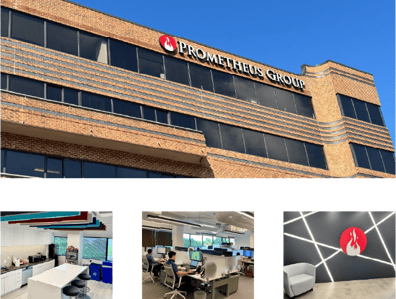Industrial equipment is one of the most important and expensive assets of an enterprise -- the pillars that support the organizations ability to provide its products or services. Likewise, the purchasing and maintenance of machines, tools and other equipment represent some of the most capital-intensive investments for modern industrial organizations. That’s why organizations invest in implementing asset management and lifecycle assessment processes, which aim at ensuring the proper operation of the equipment and its effective maintenance towards optimizing OEE (Overall Equipment Efficiency) and maximizing the ROI (Return On Investment) on their equipment.
It’s a never-ending balancing act between the profitability these assets enable versus the trade-offs associated with the Total Cost of Ownership (TCO) of the equipment, which depends on the quality of its operation, its end-of-life, as well as on its purchasing and maintenance costs.
In this two-part series, we'll discuss the alternatives to rip-and-replace, and follow up with decision-making criteria for Asset Management professionals.
The Asset Management Dilemma In The Era of Industry 4.0: Replace or Repair?
Sooner or later, enterprises are confronted with an important dilemma regarding the future of their equipment: Should they replace, maintain, or repair and upgrade existing equipment? What’s better from a cost perspective and which option boosts their competitiveness the most?
Such dilemmas are more frequent than ever before, given the rise of the fourth industrial revolution (Industry 4.0). Industry 4.0 is largely based on the collection and analysis of large amounts of digital data as a means of driving timely and accurate automation and control.
In most cases, this requires machines with digital capabilities (e.g., interfaces for digital data collection and deployment of historian databases), which are lacking from most of the legacy machines. Therefore, the need to deploy digitally enhanced machines is one of the main drivers of the industrial equipment market, as plant operators consider the repairing, upgrading, or replacing older machines with next generation, state-of-the-art, digitally-enabled machines. At the same time, the ability to collect and process digital data from machines can provide manufacturers with additional insights about whether and when to replace machines and tools, in order to optimize OEE.
Refurbishing Your Assets 101
Purchasing new equipment to replace old machines can be an extremely expensive decision, especially when this concerns many assets and/or very expensive assets. This leads to the question: could refurbishment be a viable option?
Refurbishment refers to restoring the equipment to its original condition (i.e. to the state that the equipment had when originally manufactured). In some cases, the outcome of refurbishment may even be better-than the original condition. The refurbishment process involves reassembling and replacing components, including mechanical and electrical components, but also other auxiliary components and functionalities (e.g., utilities and tools offered to the operator). It may in some cases involve adding new capabilities, such as Internet.
While it’s impossible to make the equipment exactly equivalent to the originally purchased, the goal of the process is to end up with assets that are as close to the original as possible. This is why refurbishment is sometimes called “equipment re-manufacturing”.
In practice, the refurbishment process entails the following steps:
- Inspection of visible elements of the equipment
- Repairing mechanical components
- Re-manufacturing electrical components, which may require the employment of computer diagnostics in order to understand their state.
Nowadays, refurbished machines can be also enhanced with Cyber-Physical Systems (CPS) capabilities based on the deployment of sensors and other connected devices on them. Cyber-Physical Systems (for example, sensor networks attached to the machines and its parts) can collect data about the condition of the machine, etc. This data can be used to estimate the Remaining Useful Life of the machine (or parts of it), which improves refurbishment decision-making.
The refurbishment process is usually preceded by an inspection phase, which identifies the particular parts of a machine that need to be manufactured. Such inspections can be carried out by the machine vendor or other refurbishment centers, which use their results to properly plan the re-manufacturing processes, but also to present to the machine owner (i.e. their “customer”) the cost and the implications.
Nevertheless, refurbishment frequently entails replacing the majority of a machine’s parts – a costly, if straightforward approach. Replacing selected parts can, in some cases, lead to significant cost savings without any essential loss in the functionality and lifetime of the re-manufactured machinery.
No matter whether you’re replacing some or all of the components, it’s vital to ensure that the re-manufacturing process adheres to rigorous standards and quality control procedures. It must include a thorough inspection of the machinery, before, after and during the refurbishment process. Large industrial enterprises that staff their own refurbishment teams tend to follow their own standardized and validated refurbishment processes. On the other hand, organizations without their own refurbishment teams can consider employing the services of certified refurbishment centers with a proven track record that keeps their technicians trained and up-to-date with the evolution of technology.
What's Best For Your Asset Management Strategy?
Stay tuned for our follow up article, outlining some of the decision-making criteria Asset Management professionals should consider when reviewing their refurbishment, upgrade, and repair options.



